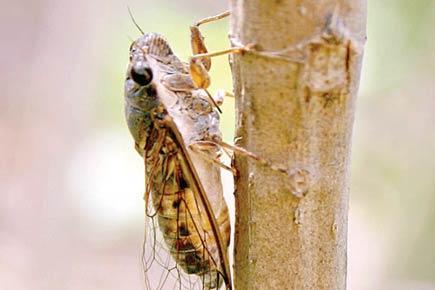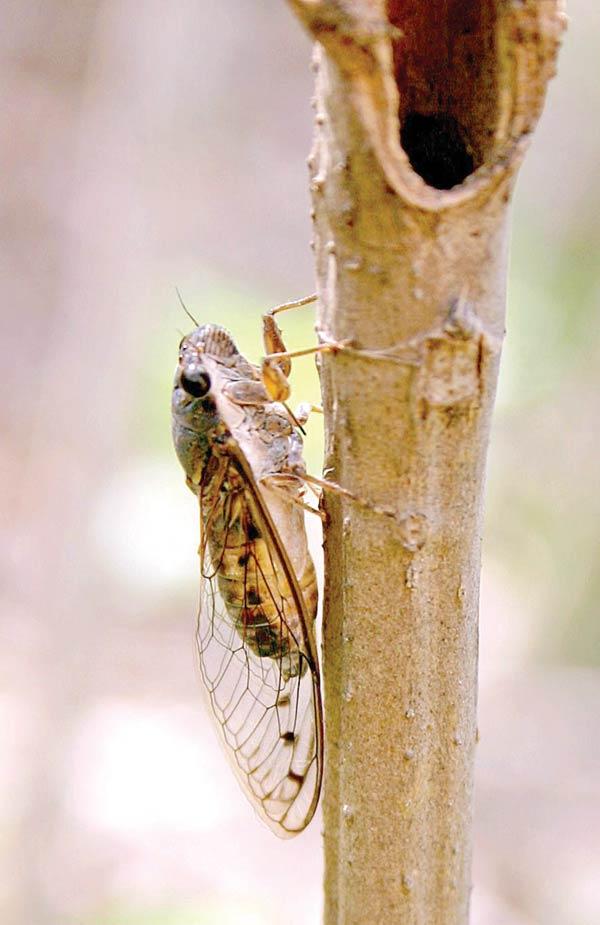Post-lunch meetings have always been a tough task for me. The gentle summer breeze, combined with the repetitive background songs of tailorbirds, crows and golden orioles drag me into a somniferous stupor

 Post-lunch meetings have always been a tough task for me. The gentle summer breeze, combined with the repetitive background songs of tailorbirds, crows and golden orioles drag me into a somniferous stupor.
Post-lunch meetings have always been a tough task for me. The gentle summer breeze, combined with the repetitive background songs of tailorbirds, crows and golden orioles drag me into a somniferous stupor.
Just the day before, I had pulled an all-nighter and my mind was fuzzy. To add to that, we were preparing material for an upcoming forest guard training programme in Dangs, Gujarat. My mind was changing focus between the commentary of the whale shark film we were previewing and sounds from my surrounding. Instinctively, I screamed, “something is sparking”.

Everyone froze to decipher the disturbing sound which was becoming hard to ignore.
My team broke into laughter and pointed out that it wasn’t an electrical spark, but an animal sound we had heard at the Sanjay Gandhi National Park during our anniversary trail.
I realised it was the call of the cicada, Latin for tree cricket. I looked out of my window, and sure enough, there was a cicada on the vilayti badam tree, producing a exceptionally loud song.
Some cicadas produce sounds of up to 120dB, among the loudest sound any insect can make. In fact, if the cicada sang just outside the listener’s ear, it is loud enough to cause permanent hearing loss.
Entomologists consider the song of cicadas to be species specific. Unlike nocturnal crickets that produce sound by stridulation (strumming), the diurnal cicadas produce sounds by vibrating drum-like tymbals (sound-producing organs) rapidly. Although only male cicadas produce the distinctive sound, both sexes have membranous structures called tympana (equivalent of eardrums) with which they detect sound.
Cicadas are more famous for their cyclic emergence than their songs. Cicadas have an interesting life cycle that lasts between two and five years. There are annual cicadas that reappear every summer. But, the real amazing cicadas are the periodic one that have a longer cycle of 13 to 17 years.
After mating, the female cuts slits into the bark of a twig where she deposits her eggs. When the eggs hatch, the newly hatched nymphs drop to the ground and burrow, emerging after intervals which are always prime numbers.
The long life cycles have resulted in myths and folklore that represent carefree living and immortality. However, these prolonged life-cycles may have developed as a response to predators, such as the cicada killer wasp and praying mantis. A specialist predator with a shorter life cycle of at least two years could not reliably prey upon the cicadas.
Cicadas are arboreal Hemipteran insects (true bugs) that belong to the Superfamily Cicadoidea and feed on plant sap. They are closely related to planthoppers, leafhoppers, treehoppers and spittlebugs (all from Suborder Auchenorrhyncha), but separated due to their lack of ability to jump.
Cicadas can fly rapidly and many are extremely well camouflaged, as their transparent wings lack the typical shine of insect cuticle. With more than 1,300 species described from around the world and Southeast Asia harbouring over 200 of these, many species are yet to be described. Historically, cicadas have also been used as money, in folk medicine and weather forecasting. When I checked their evolutionary history, I was shocked to find that cicadas had evolved in the Upper Permian Period, approximately 298-255 million years ago.
That these drumming creatures have been cutting albums for such a long time, was a heartening revelation. But the present and future of these prolonged burrowers is under immediate threat.
Given the constant burning of leaves in our colonies and the raging, morbid forest fires of Uttarakhand, reaching heights of up to 30m, I worry that these cicadas will not only be burnt on their arboreal perches, but maybe baked to death in their underground larval graves.
Write in to Anand at sproutsenvttrust@gmail.com
 Subscribe today by clicking the link and stay updated with the latest news!" Click here!
Subscribe today by clicking the link and stay updated with the latest news!" Click here!









